
The post endodontic restoration plays an important role in tooth survival, in fact, endodontic success rate can drop from 90% to 18% because of a poor coronal restoration.
The restoration of endodontically treated teeth has to be selected by following a process that considers the residual tooth structure, together with the clinical situation of the patient.
The choice of the post endodontic restoration can go from the direct to the indirect restoration, with or without post. In the indirect restorations, one can choose between composite restoration or full crown.
The risk factors that have to be taken into account when choosing between direct and indirect are the following.
First of all, one has to consider the residual tooth structure: prerequisite for direct restoration is that the tooth has no undermined and thus weakened residual coronal walls.
In molars, one has also to consider function (group function Vs canine-protected occlusion), periodontal status, tooth location, number of adjacent teeth.
Moreover, to decide if it is necessary to place a crown, other parameters as parafunctional habits, gender, age, dietary habits have to be taken into account.
Analysing the residual tooth structure, one can affirm that cuspal coverage for endodontically treated teeth lacking three or more coronal surfaces is advised, both crowns or composite onlays. Even if cusp replacement is generally carried out in indirect procedures, direct resin-based cusp replacement has shown equally effective.
The Literature has shown that in two surface class II configuration the increase in fracture resistance through cusp replacement, though statistically significant, seems to be much less pronounced. Both composite restorations and porcelain fused-to-metal crowns are acceptable approaches for achieving good survival and success rates. In fact, the long term durability of class II posterior composites with 2.5 to 3 mm cusp thickness in ETT was clinically comparable to that of vital teeth.
The Literature can provide some important data regarding crowns: they are proven to function well as a long term restorative measure for endodontically treated teeth, and the preparation of a ferrule is deemed a decisive success factor in that context. On one hand crowns work very well, on the other hand, with classic crowning a significant amount of residual tooth structure is sacrificed.
When the tooth has:
• 3 or 4 coronal walls left
• at least one marginal ridge
• no undermined cavity
direct adhesive restoration may be considered as an alternative to cuspal coverage
For posterior teeth with few or undermined coronal walls, cuspal coverage with an adhesively placed onlay, a partial crown or a conventional crown is advised.
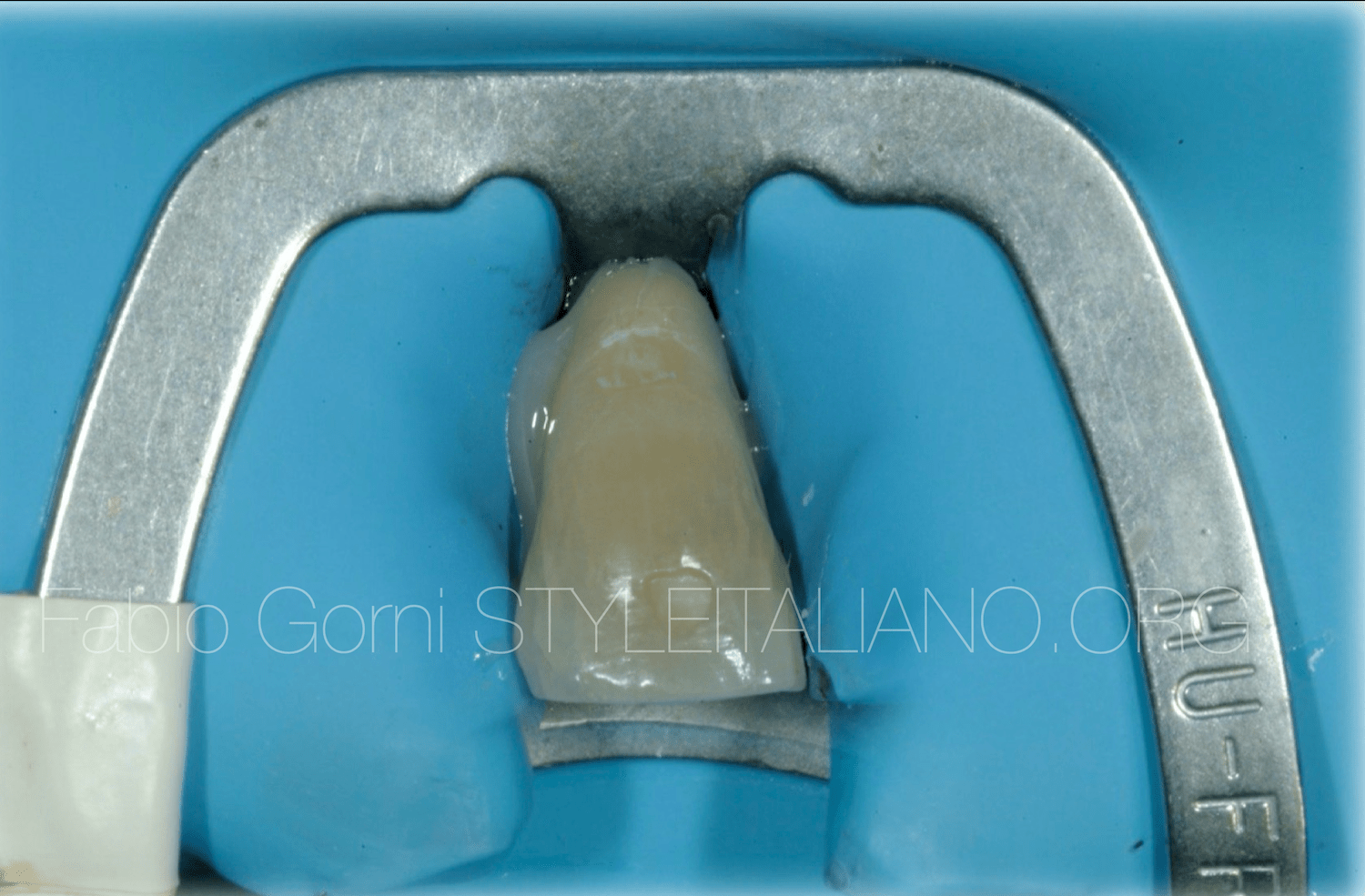
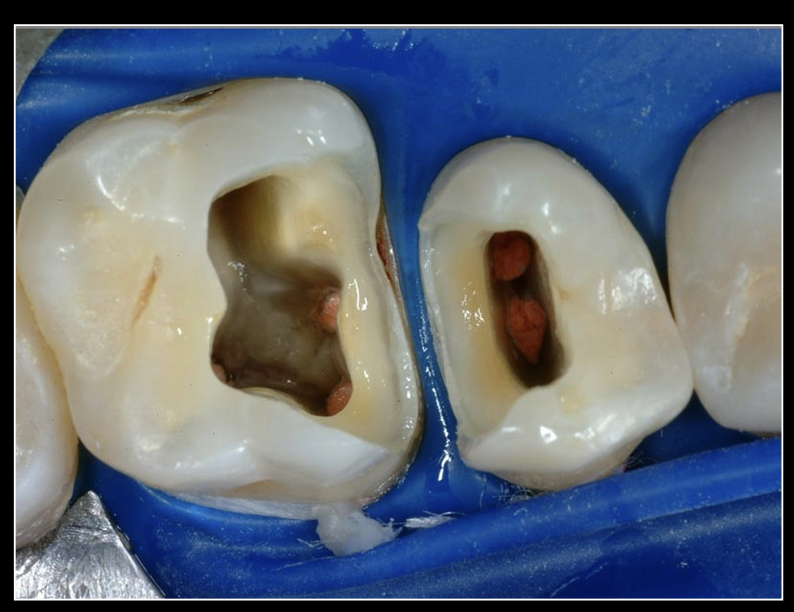
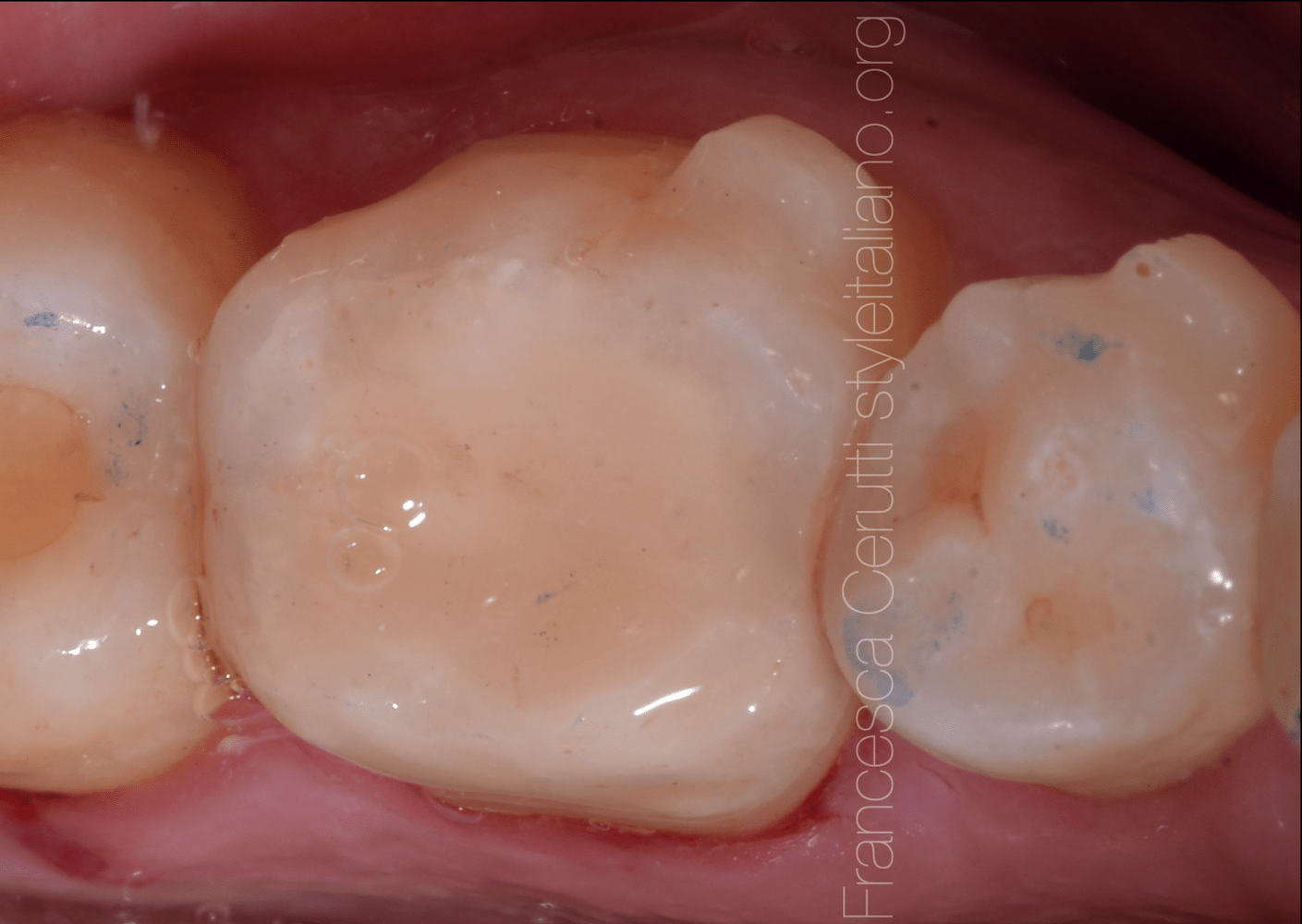


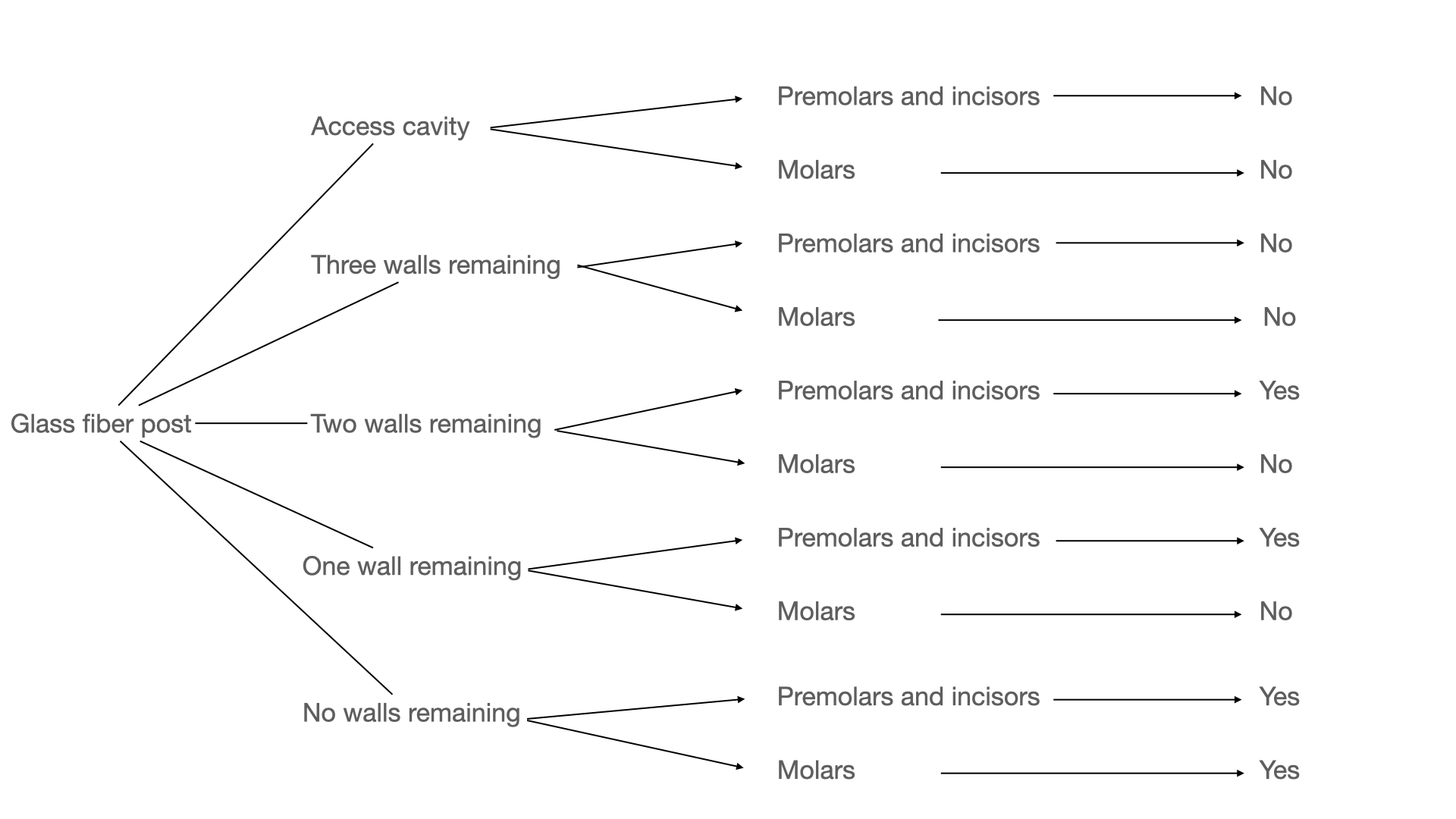
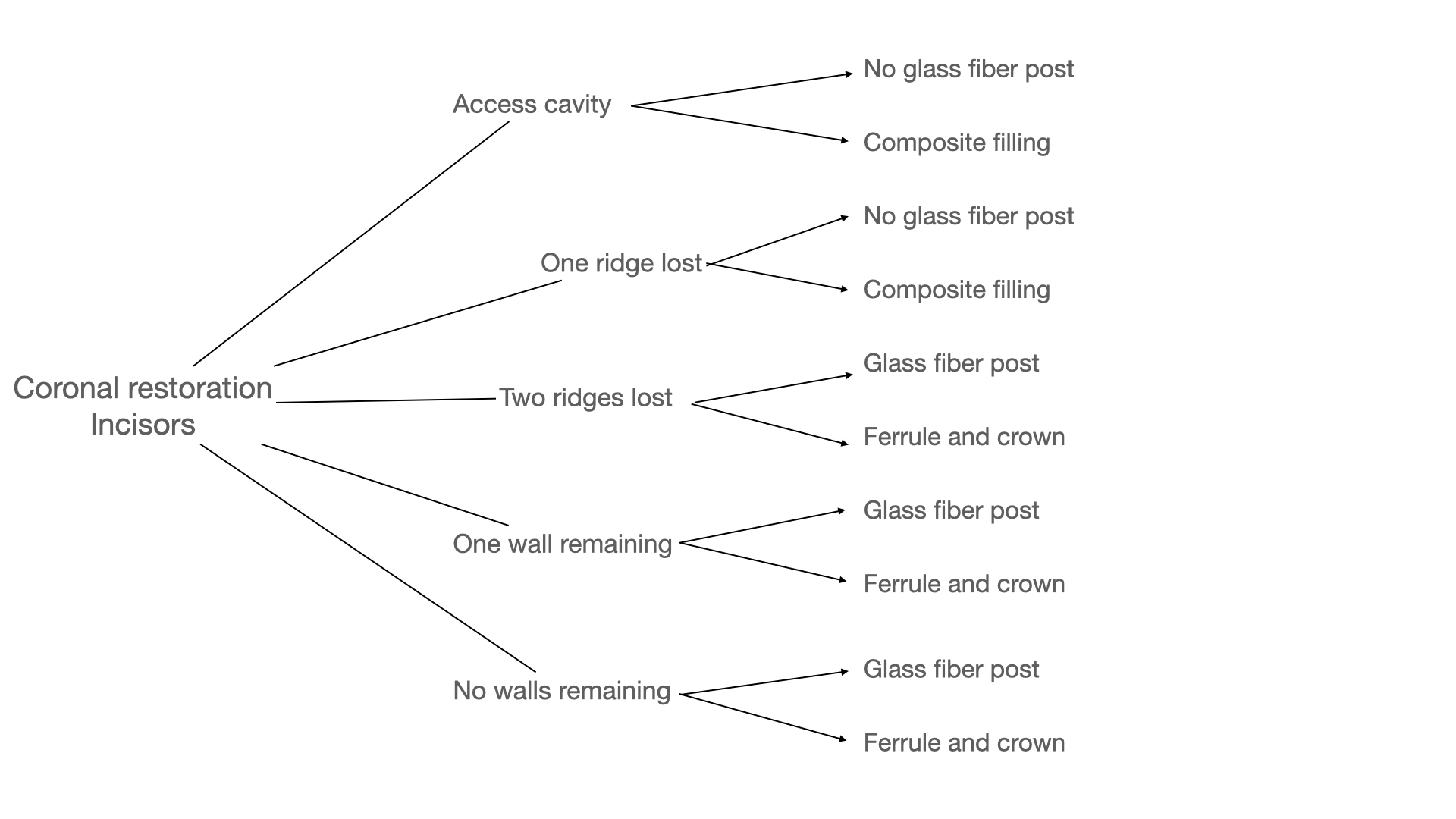
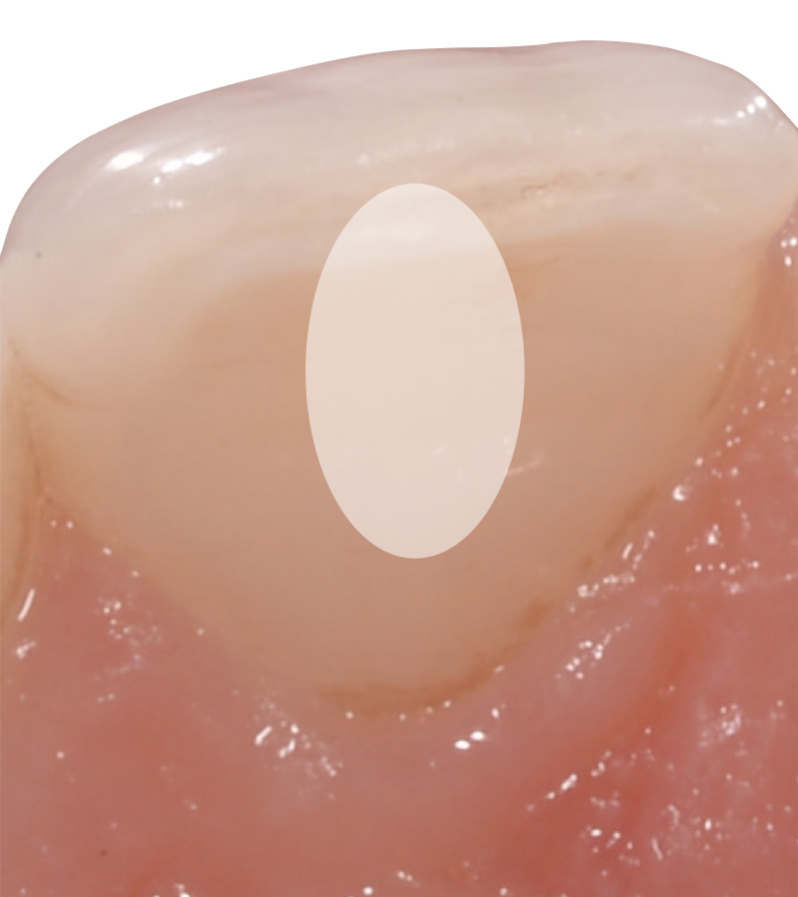
Access cavity
No glass fiber post
Composite filling
There might be an exception for extremely wide canals, where the placement of a fiber post is advised in order too reduce the C-factor
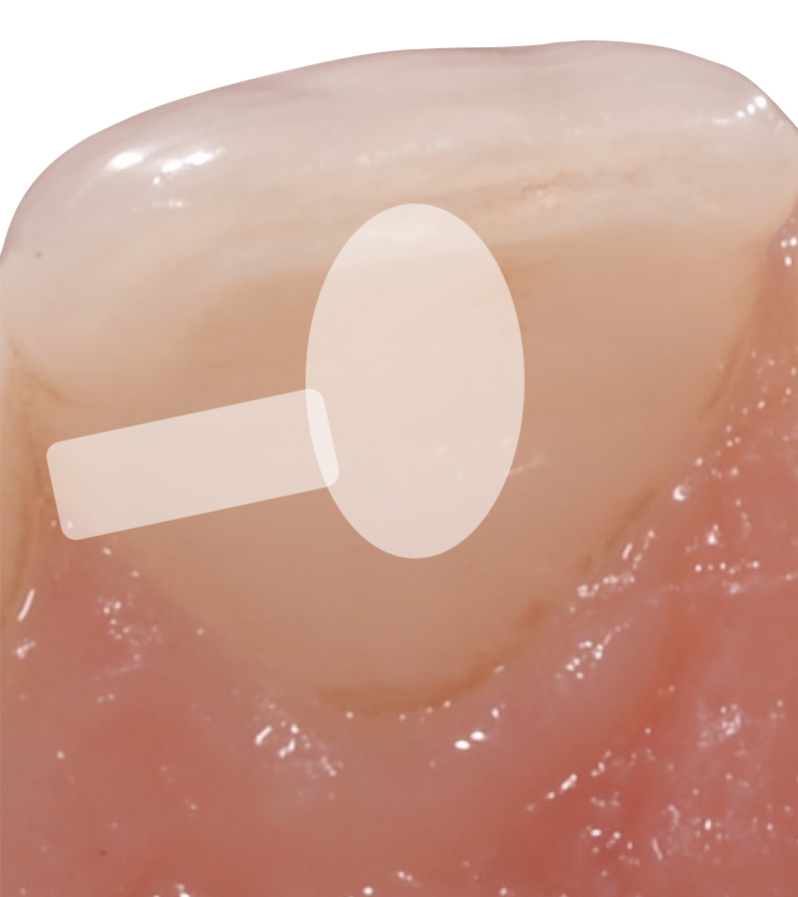
One ridge lost
No glass fiber post
Composite filling
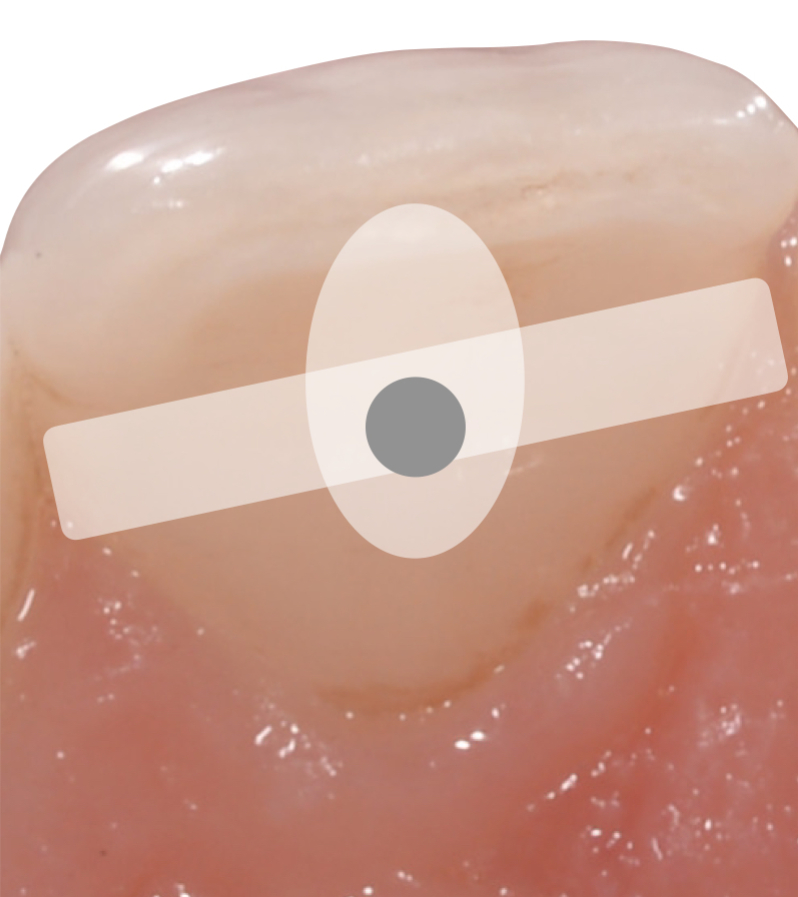
Two ridges lost
Glass fiber post
Ferrule and crown
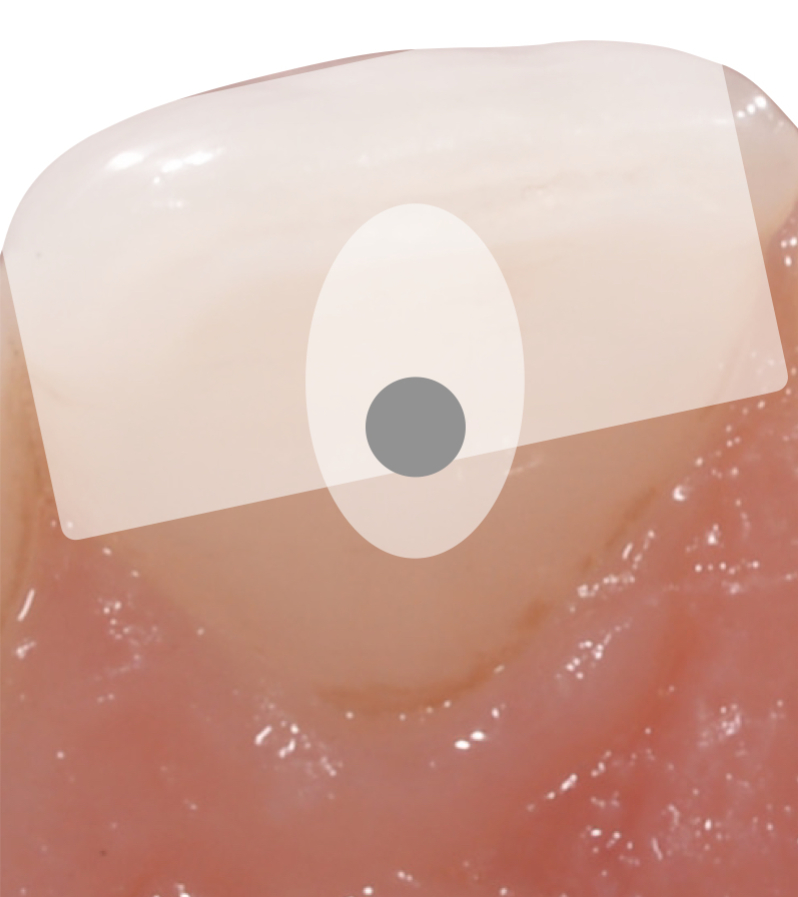
One wall remaining
Glass fiber post
Ferrule and crown
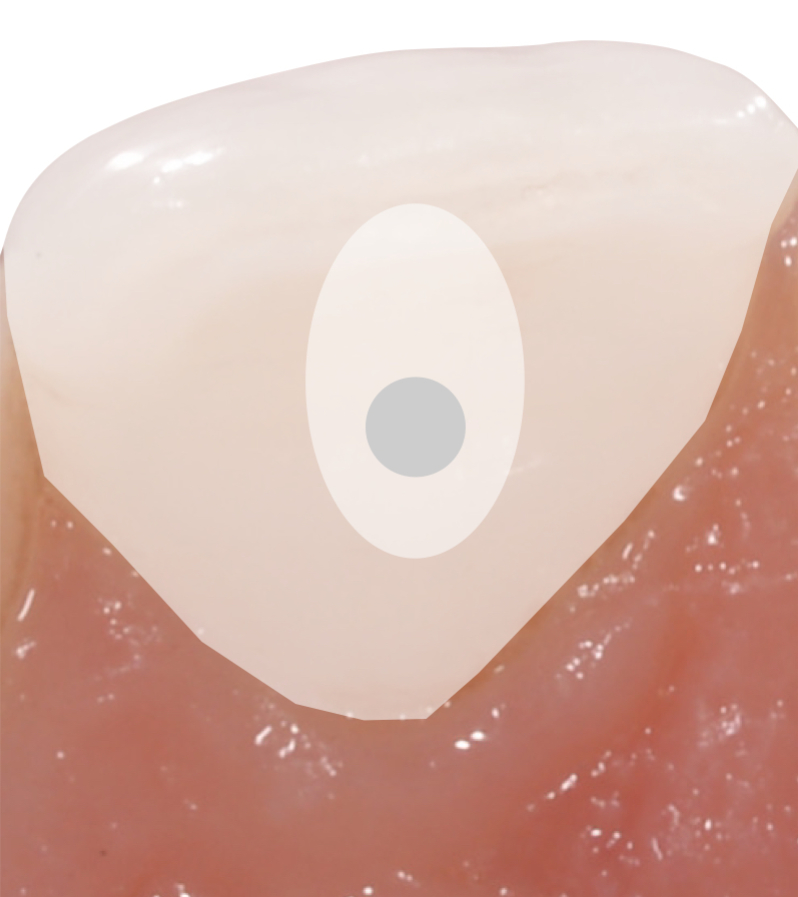
No walls remaining
Glass fiber post
Ferrule and crown
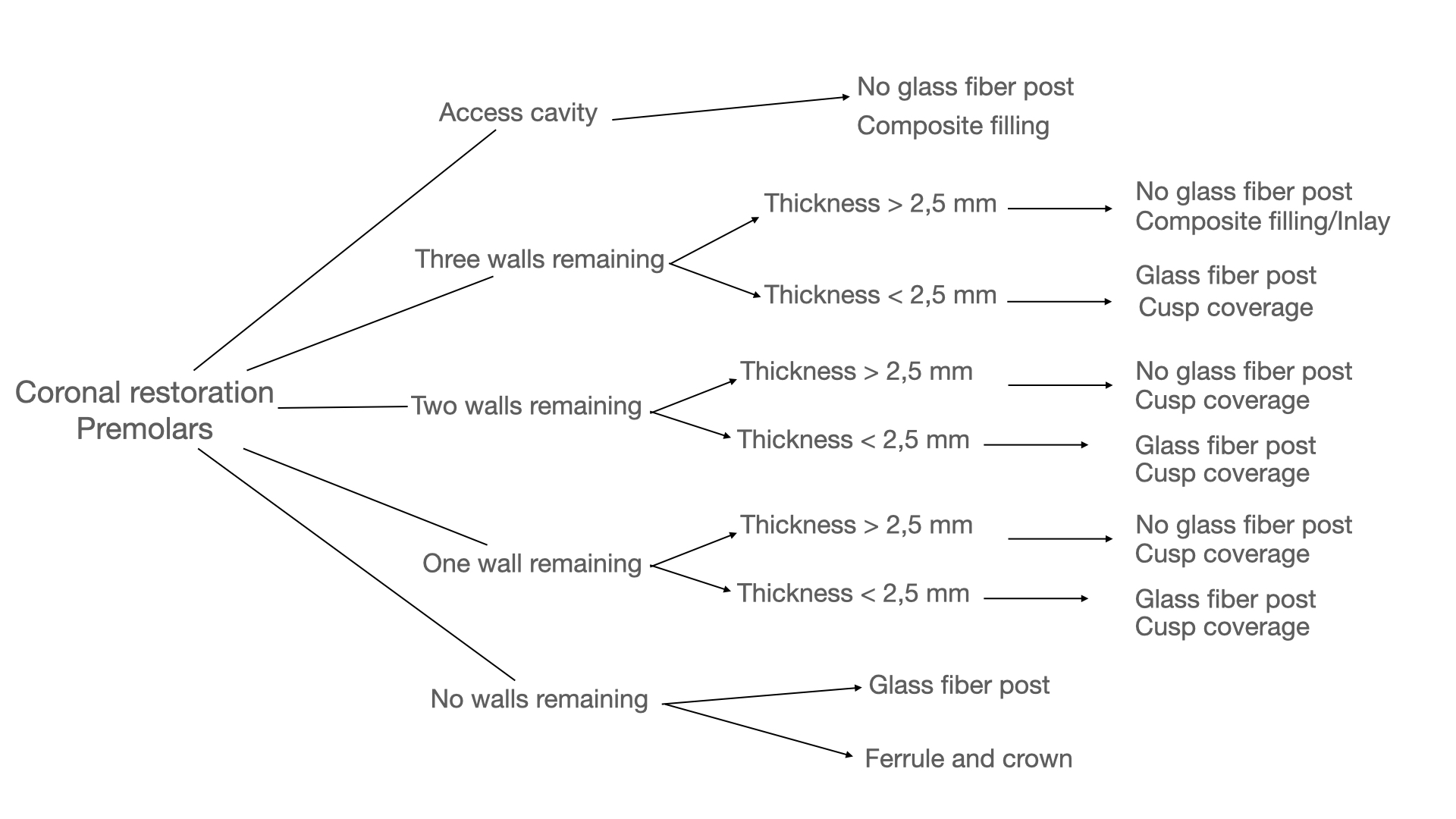
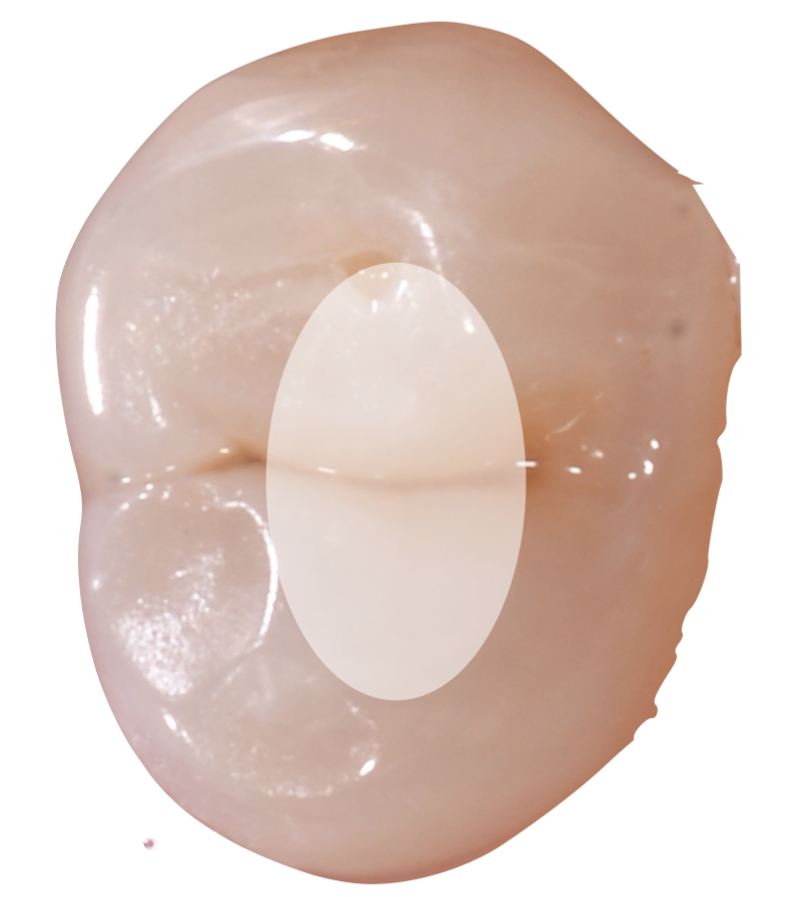
Access cavity
No glass fiber post
Composite filling
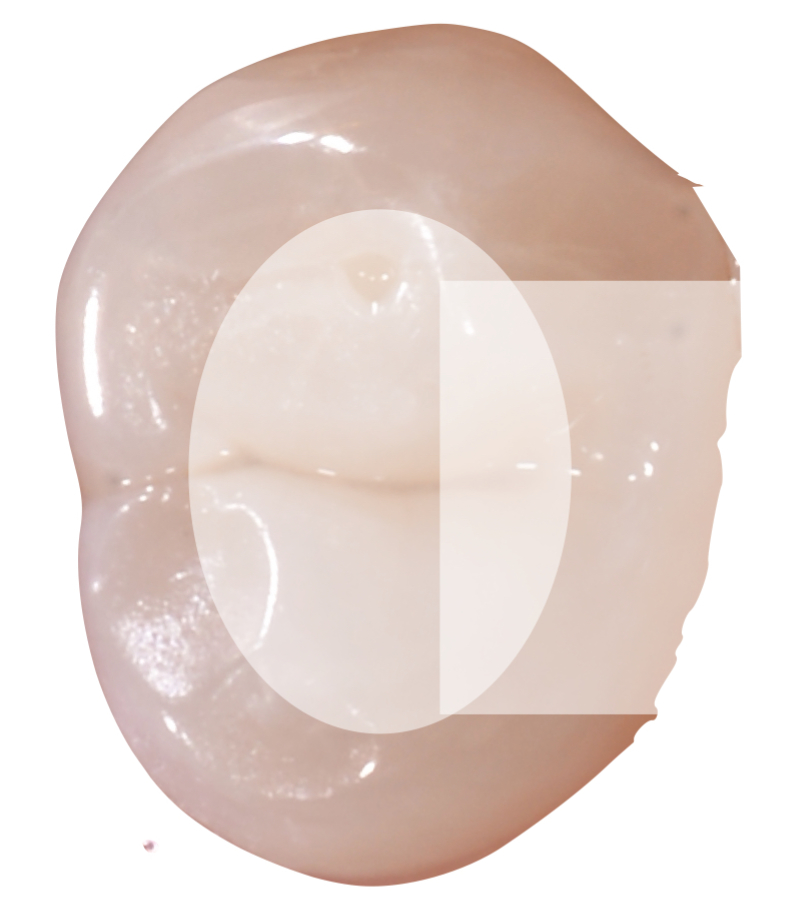
Check the thickness of the walls
Thickness > 2,5 mm
No glass fiber post
Composite filling/Inlay
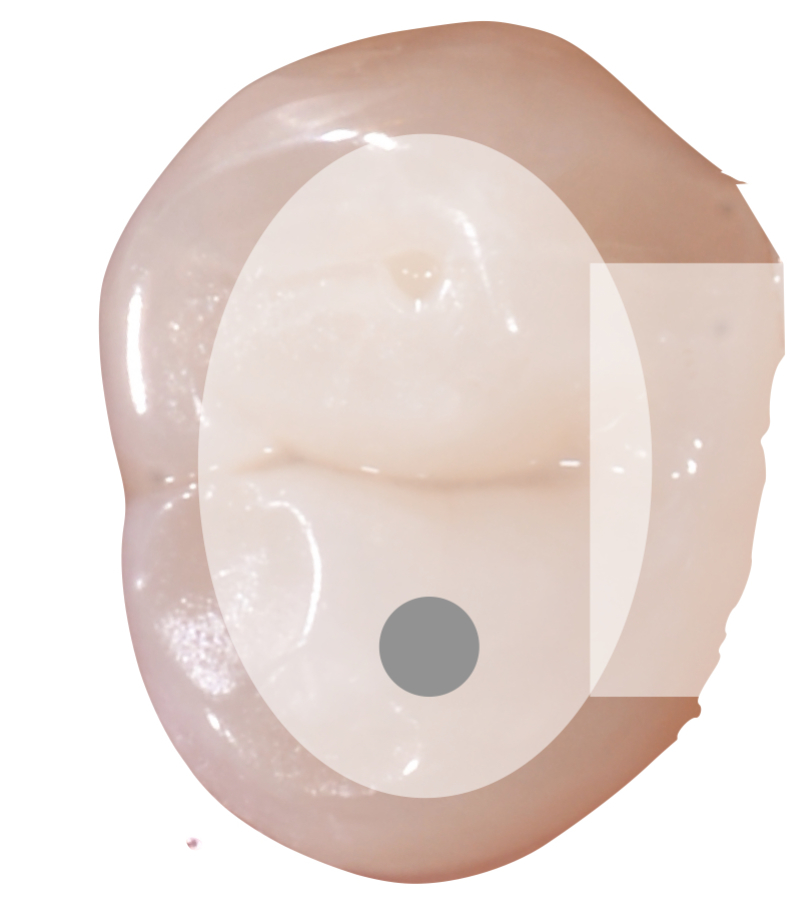
Check the thickness of the walls
Thickness < 2,5 mm
Glass fiber post
Cusp coverage
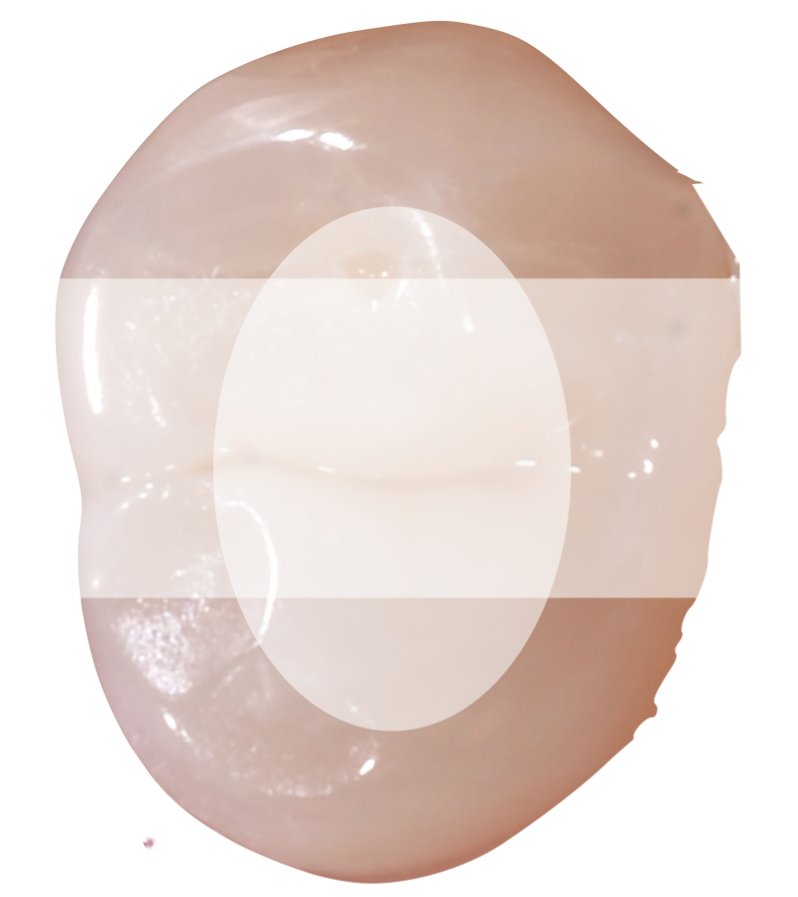
Check the thickness of the walls
Thickness > 2,5 mm
No glass fiber post
Cusp coverage
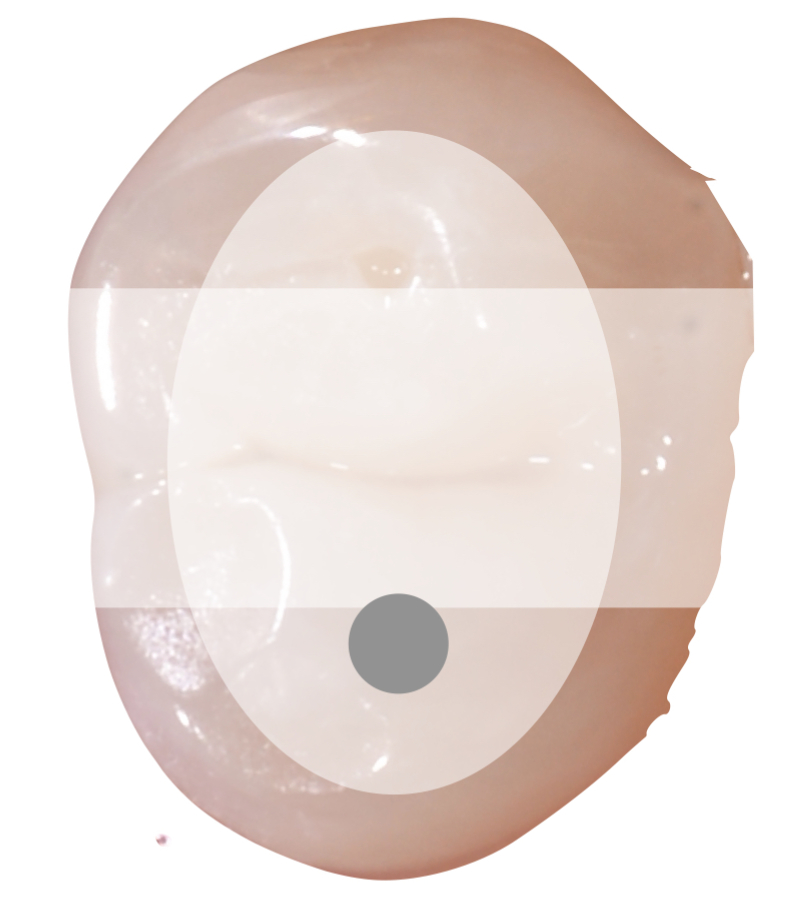
Check the thickness of the walls
Thickness < 2,5 mm
Glass fiber post
Cusp coverage
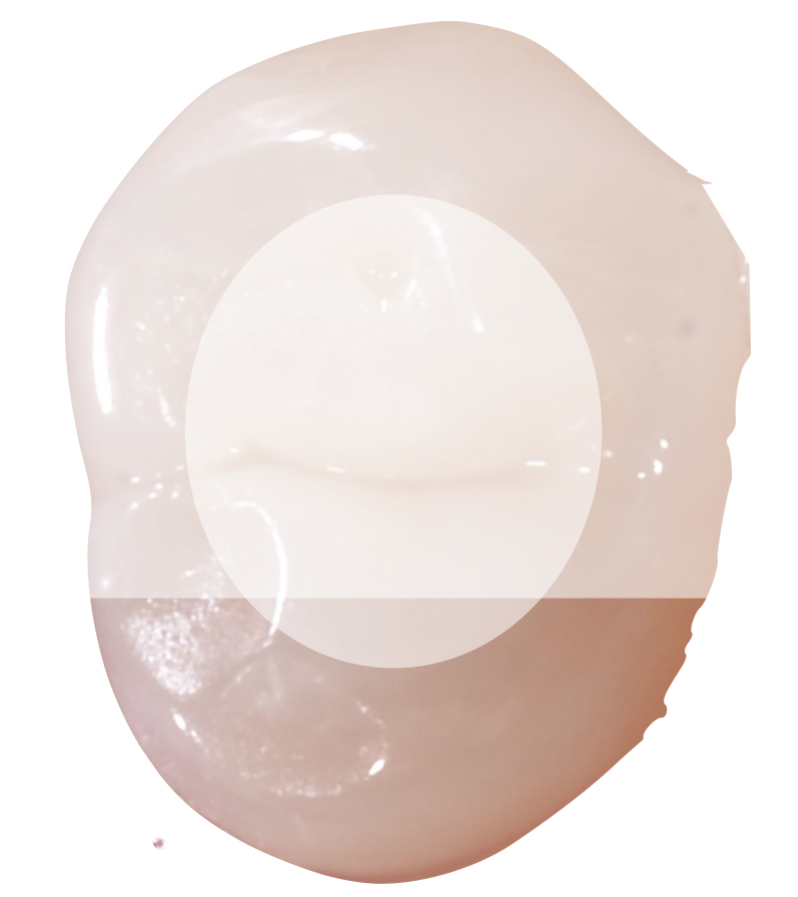
Check the thickness of the walls
Thickness < 2,5 mm
Glass fiber post
Cusp coverage

Check the thickness of the walls
Thickness > 2,5 mm
No glass fiber post
Cusp coverage
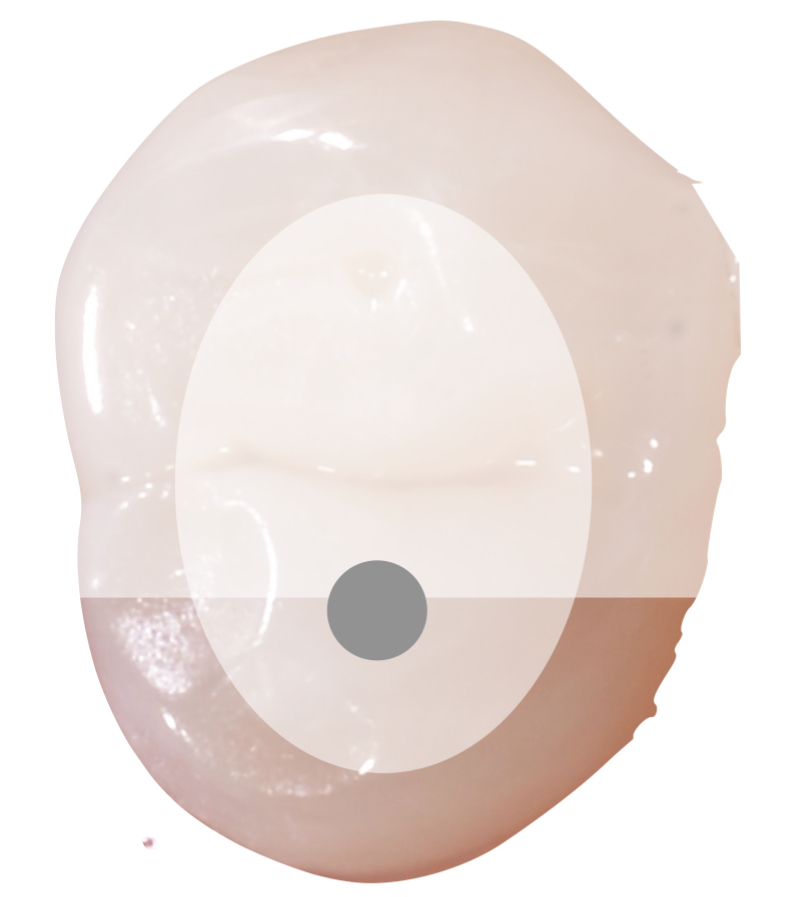
Check the thickness of the walls
Thickness < 2,5 mm
Glass fiber post
Cusp coverage
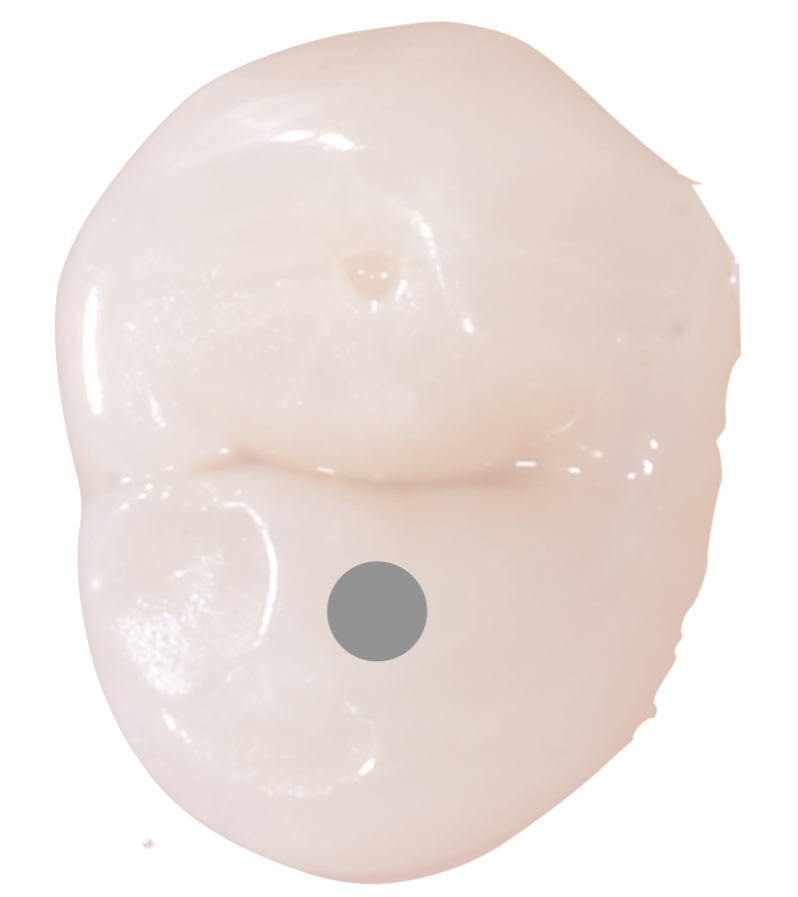
Glass fiber post
Ferrule and crown
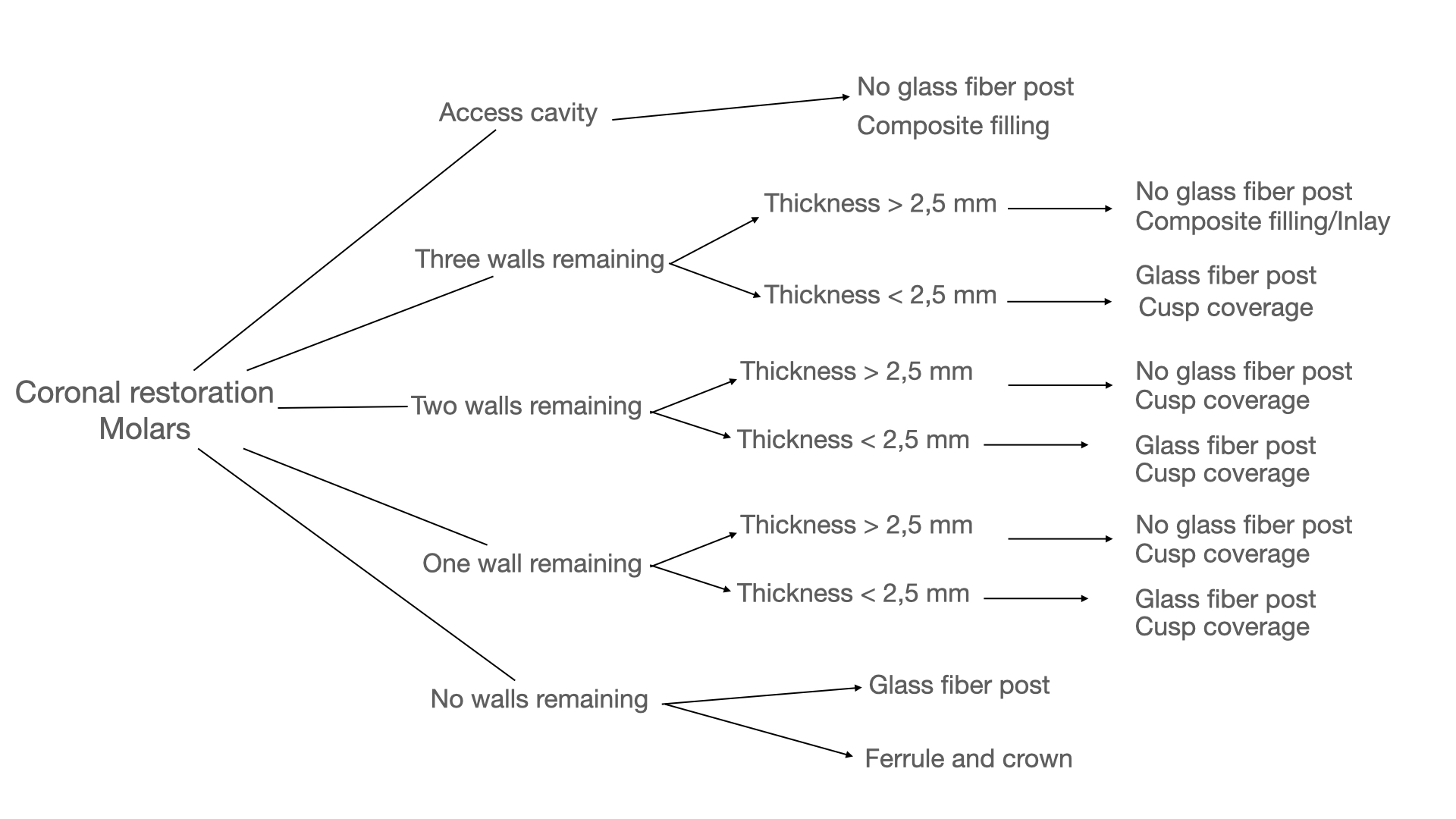
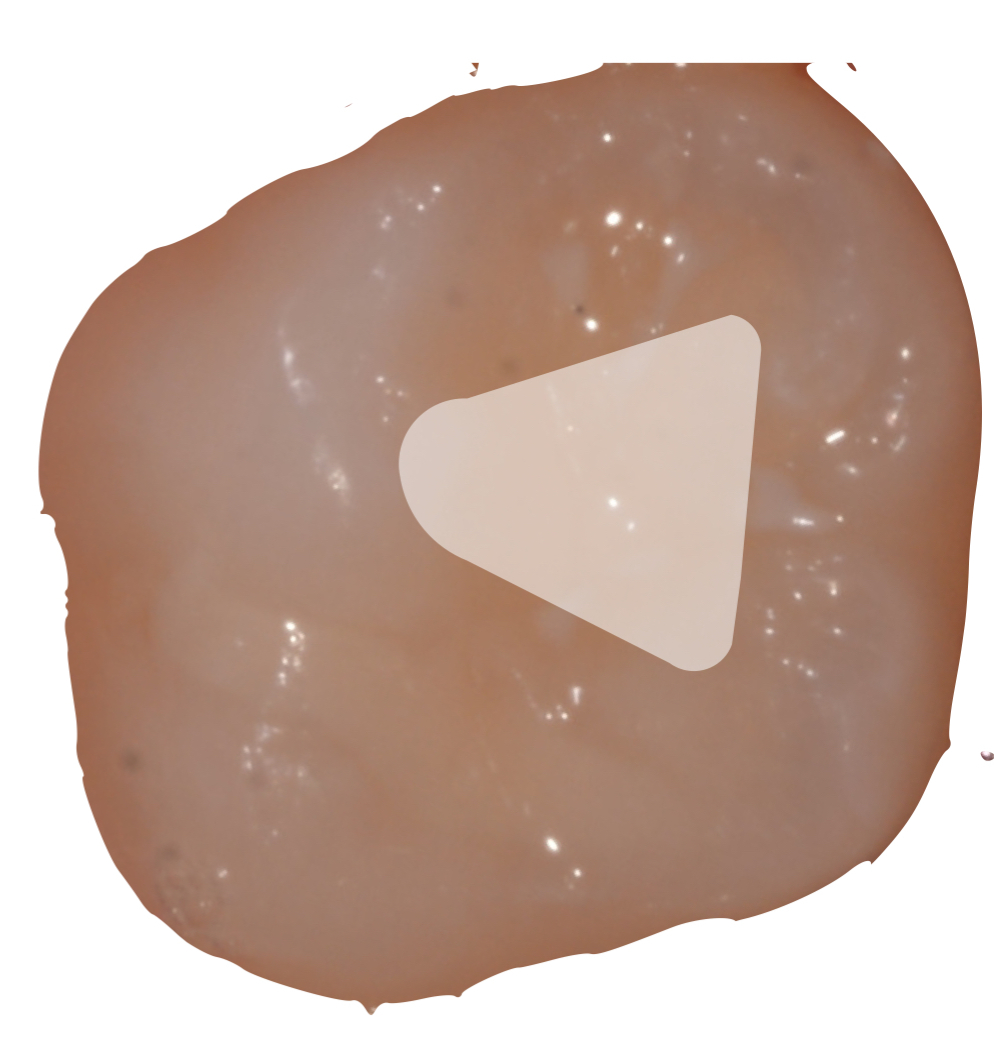
Access cavity
No glass fiber post
Composite filling
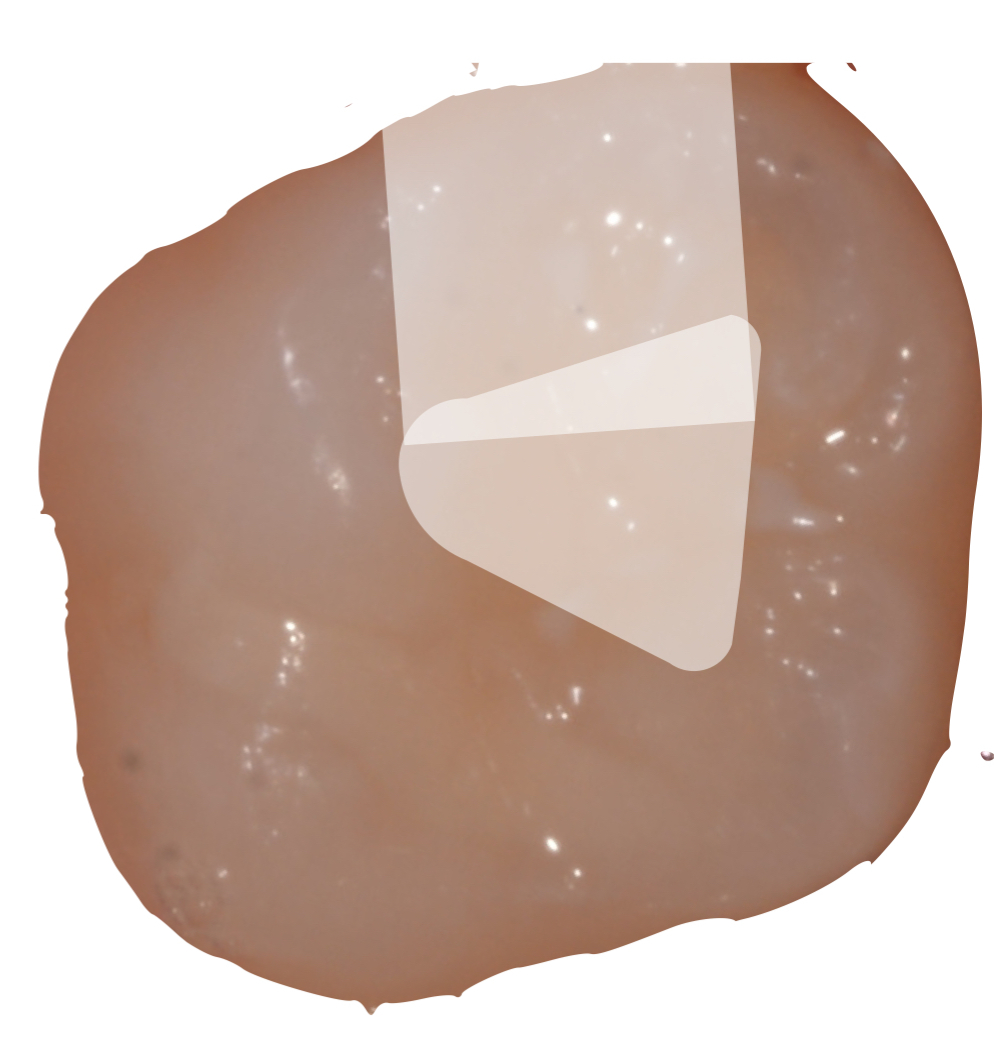
Check the thickness of the walls
Thickness > 2,5 mm
No glass fiber post
Composite filling/Inlay
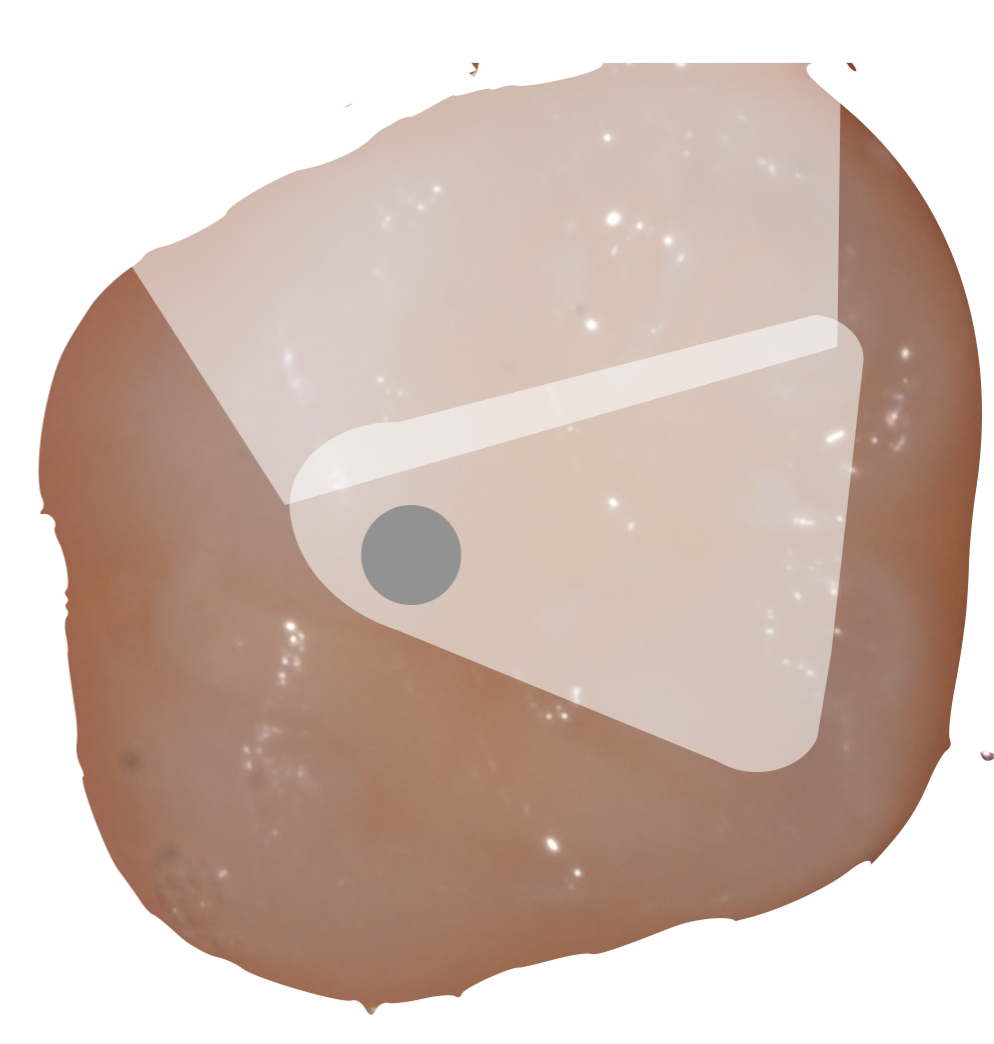
Check the thickness of the walls
Thickness < 2,5 mm
Glass fiber post
Cusp coverage
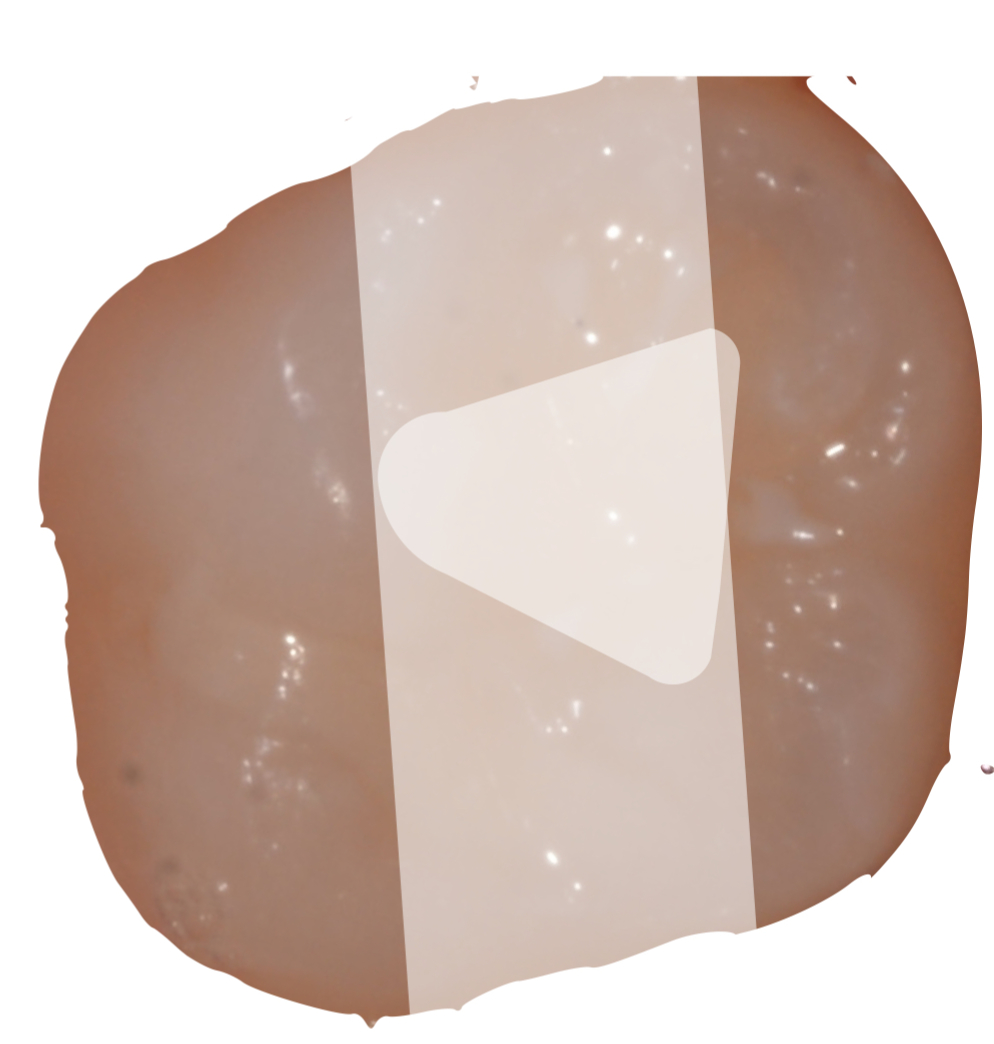
Check the thickness of the walls
Thickness > 2,5 mm
No glass fiber post
Cusp coverage

Check the thickness of the walls
Thickness < 2,5 mm
Glass fiber post
Cusp coverage
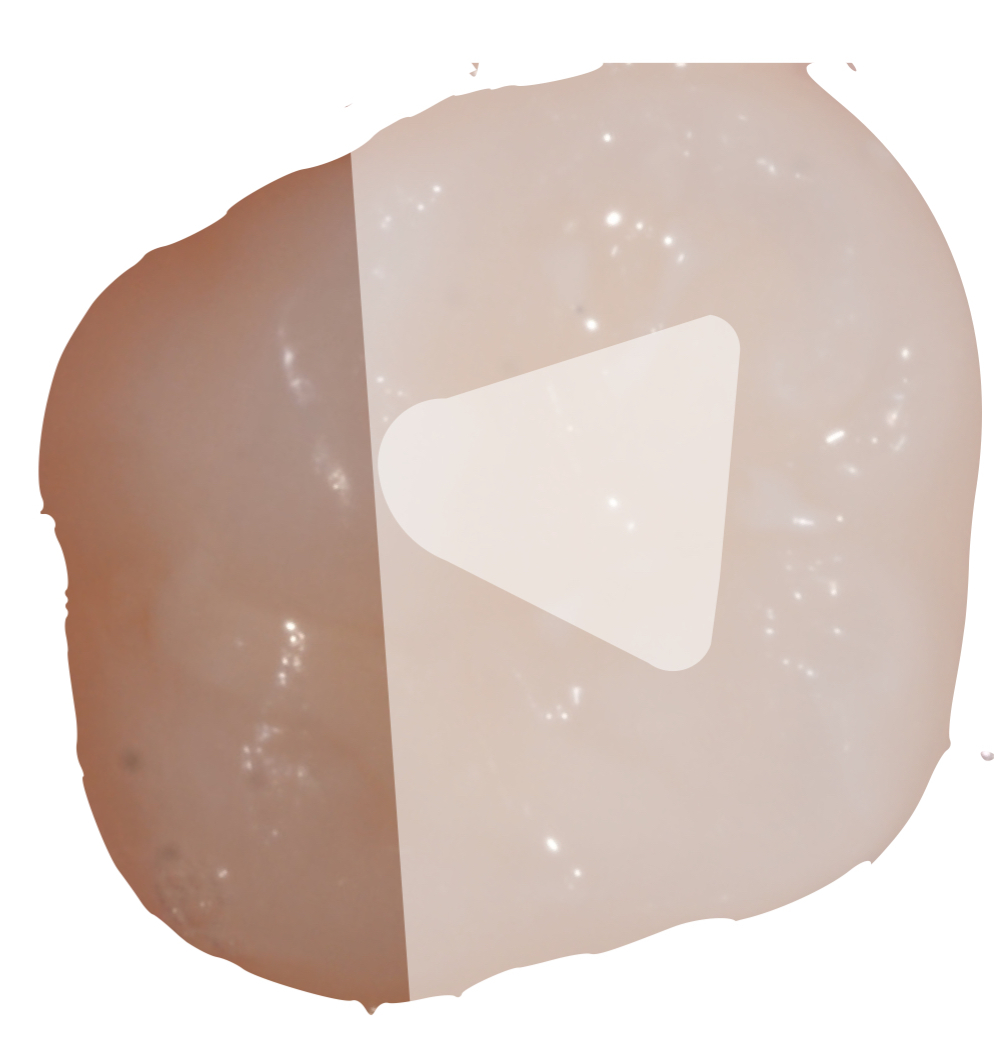
Check the thickness of the walls
Thickness > 2,5 mm
No glass fiber post
Cusp coverage

Check the thickness of the walls
Thickness < 2,5 mm
Glass fiber post
Cusp coverage
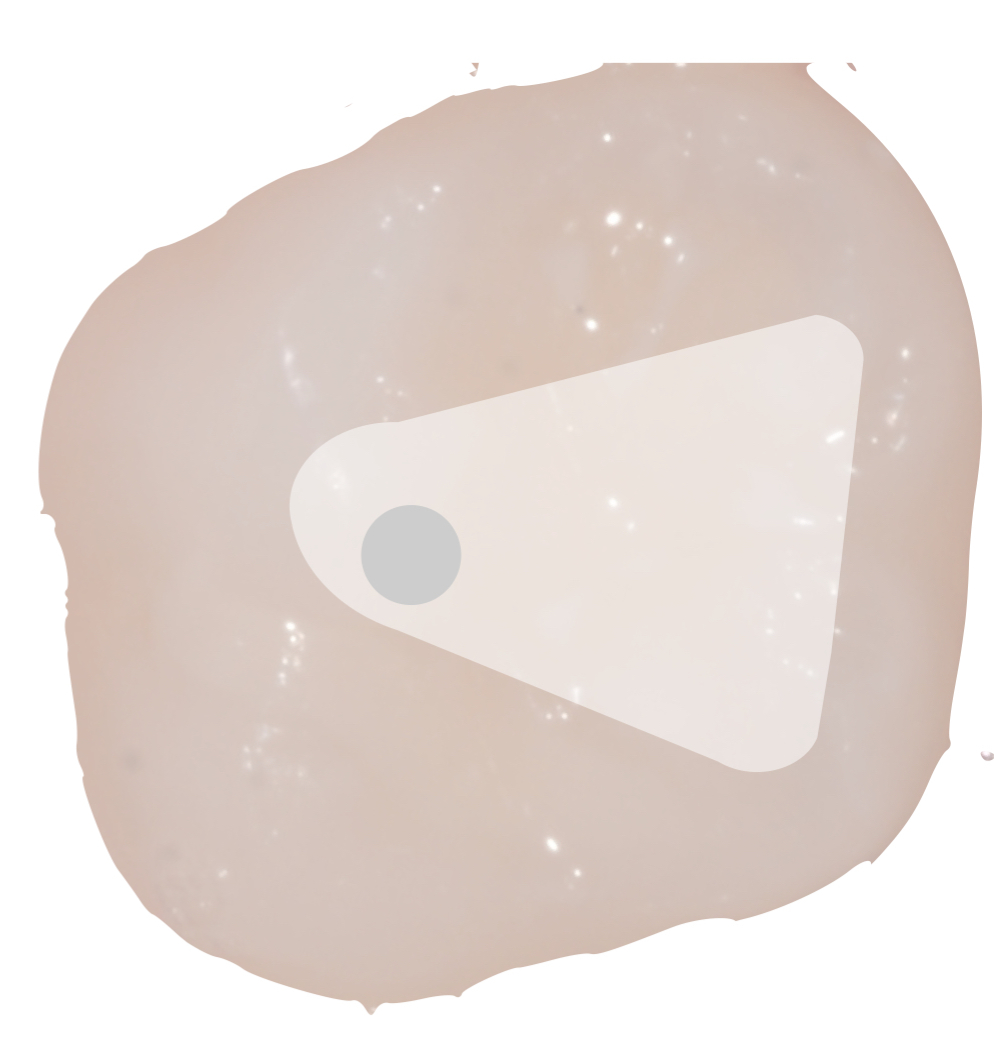
Glass fiber post
Ferrule and crown